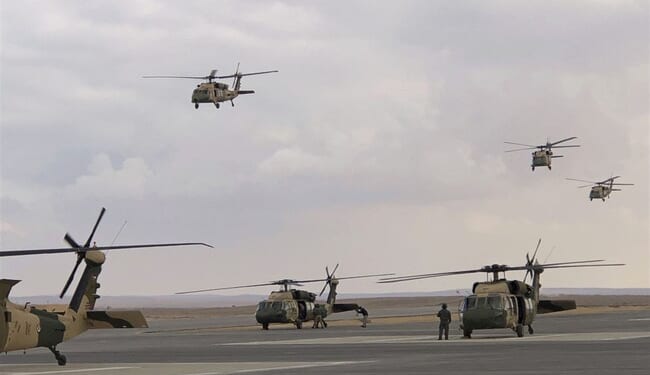
Sitting in front of a touchscreen console, Secretary of War Pete Hegseth touched a digital control and watched a UH-60 Black Hawk obey his command. The chopper responded with a live cockpit feed, climbing and banking, while two Army pilots sat inside only as a precaution for safety.
Hegseth had just flown one of America’s most iconic aircraft without ever stepping near the rotor wash, in a video that looked like it was taken from a Bond movie, but it wasn’t fiction, just a public demonstration of how war is changing in real time.
A Glimpse at the New Battlefield
DARPA designed the Aircrew Labor in Cockpit Automation System and partnered with Sikorsky and Lockheed Martin to turn legacy aircraft into platforms that operate with minimal human effort. Gimmicktry wasn’t the goal; DARPA wants helicopters that fly themselves or accept commands from miles away.
When an aircraft that once depended on two highly trained pilots now answers to a tablet interface, the battlefield shifts. It’s hard to watch Hegseth’s demonstration without seeing where the military intends to go.
A Secretary’s Presence Changes the Meaning
Just having the technology would’ve been news, but the presence of the secretary of War added weight. The Pentagon wanted Americans to see a cabinet official remotely fly an operational Black Hawk as part of a symbolic communication strategy.
When he touched the controls, Hegseth did more than guide a helicopter; he signaled that the United States is preparing for a world in which pilots may command aircraft from a secure site, and missions that once required direct human presence can rely on automation.
Why This Matters for National Defense
Adapt or die; that inability killed our future fossil fuels. Modern threats force adaptation because in places like the Taiwan Strait, the Persian Gulf, or Eastern Europe, traditional crewed aircraft face growing risks from air defense systems, anti-access zones, and electronic warfare.
Imagine a scenario where a remotely piloted Black Hawk inserts troops, retrieves the wounded, or humps supplies without endangering human pilots. Having this capability changes the math on missions that were once deemed too dangerous. Yet it also opens the door to a new era where machines become the first wave into contested territory.
The Questions Americans Should Ask
Capability and concern are introduced by progress; once a helicopter operates without pilots on board, the chain of accountability becomes more complex.
When there aren’t any aviators in the cockpit, who is responsible? How does the military safeguard remote controls from cyber threats? Does pushing a button from a protected facility make war feel easier than it should?
Questions like these matter because once technology reshapes the battlefield, democratic oversight must catch up. Power grows when people don’t see where the authority truly sits.
Operational Ripples Across the Entire Force
If the military widely deploys these systems, the changes will reach every corner of the service; training will shift from aviation skills to interface mastery, and maintenance crews will work on systems that blend aircraft engineering with advanced automation.
Remote operators will plan missions over terrain that they will never see. Even the definition of courage and valor evolves when the danger no longer sits beneath a rotor blade, but inside a data link that carries the command.
Final Thoughts
Hegseth wasn’t flying for entertainment; it previewed a battlefield dominated by unmanned platforms, remote pilots, and digital command centers.
I certainly don’t mean to imply that our troops will no longer need courage and valor, but if there’s a way for them to do their jobs without them getting blown up, I’m all for it.
War’s future no longer begins with a pilot climbing into a cockpit; it starts with a screen, a connection, and a decision made far from the fight. It’s a future that’s already arriving.
America can’t afford to watch it without understanding the responsibility it demands.
You deserve a publication that goes beyond shock value and digs into the meaning behind these technological leaps. At PJ Media, we follow the power, question the motives, and keep you informed when political leaders unveil the tools that will shape tomorrow’s conflicts. Use promo code FIGHT to get 60% off your VIP membership.















